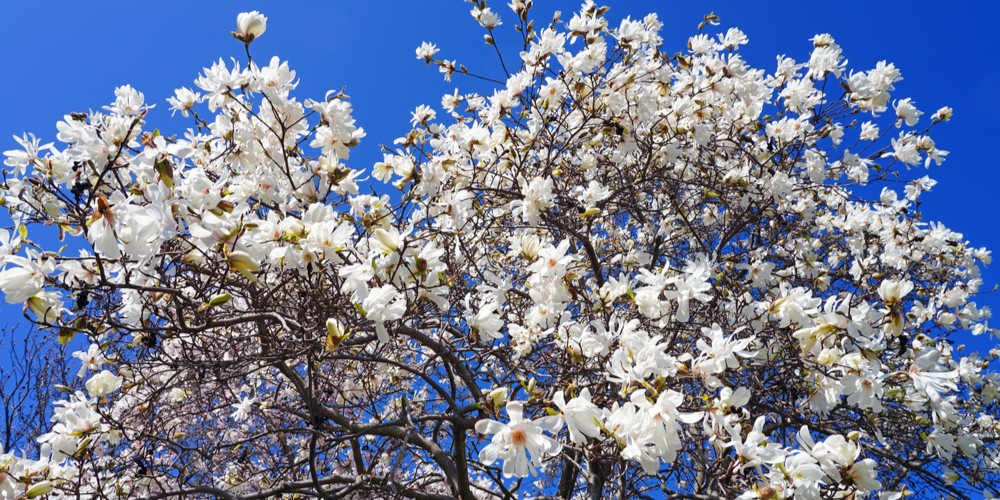We often associate magnolia trees with the warm temperatures of the Southern states. But while that might be true, magnolias are not limited to Florida.
If you like flowering plants, you for sure love magnolias. Their glorious and fragrant flowers contrast with the deep green dense foliage for a dramatic effect.
While relatively easy to grow, they might not thrive in colder regions. Or can they? Keep reading this “Magnolia Tree Zone 4” essential guide we put together to find an answer to your question. Indeed, here, you’ll find all the information you should know about growing a magnolia tree in zone 4.
The good news is that there are several types of magnolia trees. Some grow in the form of a shrub, others as a tree. All of them produce showy and stunning bright-colored flowers that will make your garden more lively during the blooming season. But how can you select a variety that will withstand cold northern winters?
For starters, pick a tolerant variety that won’t mind low temperatures. Hardiness zone 4 includes some of the coldest states of the country, so you must choose your magnolia tree carefully. But that shouldn’t stop you from adding magnolias in your yard.
Magnolia Tree Zone 4: All you Need to Know
When shopping for your next tree, the experience must go beyond selecting the one you like the most. You must consider the size of the location you want to plant your tree, the basic requirements you will have to meet, and your local weather conditions. With that in mind, selecting an adequate variety might be easier than it sounds.
Magnolia trees do best in acidic soils. Don’t forget to perform a pH test to ensure your ground can offer your plant what it needs. Otherwise, consider amending your soil. Add organic material, peat moss, and manure to make it more suitable for magnolias.
Plant your magnolia tree in spring for best results. Do it after the last frost, usually between April and May in zone 4. Respecting such dates will allow your tree to establish and harden before being exposed to extreme temperatures. Of course, always check with your local weather before planting your tree. Indeed, temperatures can change from year to year.
Star Magnolia in Zone 4
If you live in zone 4, you should have “Star” in mind when shopping for magnolia.
This variety is cold-hardy and slow-growing, perfect for zone 4 gardens. You can find it in the form of small trees or large shrubs that will start producing flowers even from the first season if you allow them to. Native to Japan, you can find Star Magnolias in different colors. From white to pink, you’ll love most of them.
Place them under the full sun for best results, and don’t forget to add mulch around your tree’s base before winter. Doing so will help you regulate the soil temperature and protect your plant from harsh frosts. While magnolias usually don’t mind small spaces, consider giving your tree plenty of room to grow: the result will be stunning. Indeed, they do best when not crowded.
If you manage to establish your magnolia tree and let it survive its first winter, you won’t have to worry too much about your plant afterward. This variety is the best suited for zone 4, meaning you won’t have to worry if temperatures drop during the winter.
Star magnolias only grow about ten feet high and wide. They are perfect even for yards that don’t have much space at disposal. While the tree is most stunning during the blooming season (which happens throughout all summer), you can enjoy its beauty all year round. The dark-green glossy foliage turns golden-brown in the fall. During the spring, the tree produces shade and makes your garden more lively. In the winter, the bark will make for an elegant backdrop.
Other varieties for Zone 4
It is easier to find varieties suitable to warmer climates, but you can find magnolia trees for zone 4. Besides the star magnolia, two other species will tolerate cold winters: Leonard Messel and Merrill.
These trees are larger than the star and can grow more than 15 feet in height. Depending on whether you wish to have pink or creamy blooms, you might choose one variety over the other. Caring for them involves a similar step to those for star magnolia.

